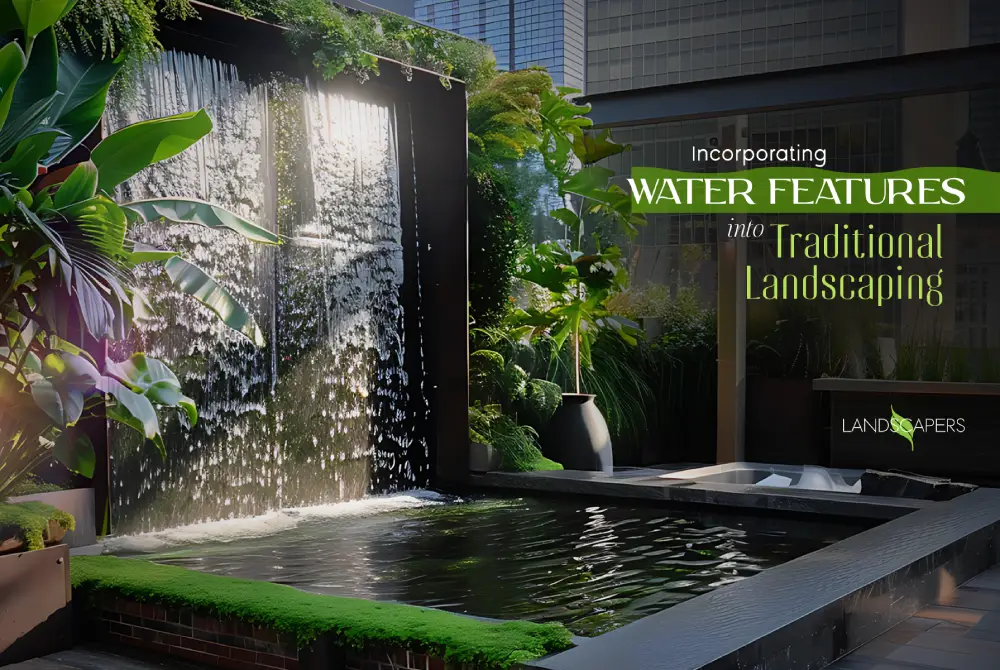
Incorporating Water Features into Traditional Landscaping
A stunningly unique outdoor space is created through the fusion of classic and contemporary elements in landscaping. One of the most enchanting ways to achieve this harmony is by incorporating water features into traditional landscaping designs. The soothing sounds and dynamic visuals of water can enhance the timeless appeal of classic gardens, making them more serene and engaging. Here’s how you can seamlessly blend water features into traditional landscaping.
1. Understanding Traditional Landscaping
Traditional landscaping often focuses on symmetry, formal structure, and classic plantings. This style might include manicured lawns, geometric garden beds, clipped hedges, and well-defined pathways. Plant choices are typically timeless and might include roses, boxwoods, and ornamental grasses. The overall design is carefully planned to create a sense of order and elegance.
2. The Appeal of Water Features
Water features, ranging from fountains to ponds, add a layer of tranquility and visual interest. The gentle murmur of a fountain or the shimmering surface of a pond can provide a soothing counterpoint to the rigid lines of traditional landscaping. They also attract wildlife, such as birds and butterflies, enhancing the garden’s vibrancy.
3. Choosing the Right Water Feature for Your Taste
Fountains: A classic choice, fountains can blend beautifully with traditional landscaping. Choose materials like cast stone, bronze, or ceramic to complement traditional garden elements. A tiered fountain, with its cascading water, can echo the structured, formal lines of a classic garden.
Ponds: A well-placed pond can become a focal point in a traditional garden. Consider a formal pond with straight, clean lines that mirror the geometric shapes in your garden. Surround it with traditional plants like water lilies or lotuses to maintain the classic aesthetic.
Streams and Cascades: For a more dynamic addition, a stream or cascade can introduce movement and sound. A gently meandering stream with stone edges can blend seamlessly with traditional landscaping. Ensure the design is aligned with the overall symmetry of the garden.
Reflecting Pools: These can add a touch of elegance and serenity. Reflecting pools are particularly effective in traditional gardens with symmetrical layouts, as they mirror the surrounding garden elements, creating a harmonious visual effect.
4. Integrating Water Features into the Design
Placement: A water feature’s placement should enhance the traditional design rather than disrupt it. Position fountains or ponds where they can be viewed from key lookout points, such as garden seating areas or main pathways. Ensure they complement existing garden structures, like pergolas or statues.
Materials and Styles: Choose materials and styles that align with the traditional elements of your garden. For example, a granite or limestone fountain can blend seamlessly with a classic stone pathway or patio. Go for simple, elegant designs that echo the traditional aesthetics of your garden.
Surroundings: Incorporate traditional plantings around your water feature to integrate them into the landscape. Formal hedges, geometric topiaries, and classic flower beds can frame the water feature and create a cohesive look. Ensure that the surrounding plants don’t overwhelm the feature but rather enhance its presence.
Maintenance: Regular maintenance is crucial to keep water features looking their best. Clean fountains and ponds to prevent algae buildup and ensure that the water flows smoothly. In a traditional garden, maintaining the water feature’s pristine condition is key to preserving the overall elegance of the design.
5. Adding Classic Touches
To enhance the traditional feel, consider adding classic touches around your water feature. Stone benches, wrought-iron railings, or classical statues can add a refined touch. Paved pathways leading to the water feature can enhance accessibility and highlight the feature’s importance in the garden.
Incorporating water features into traditional landscaping is a brilliant way to add depth, movement, and tranquility to your garden. By carefully selecting and positioning these elements, you can create a harmonious blend of classic beauty and serene water dynamics. Whether you choose a grand fountain, a serene pond, or a gentle stream, the key is to ensure that the water feature complements and enhances the traditional elements of your garden, creating a timeless and elegant outdoor space.
Embrace the art of combining these two styles, and watch your traditional garden come alive with the brilliant water feature seamlessly integrated into the traditional landscaping elements in your home.

